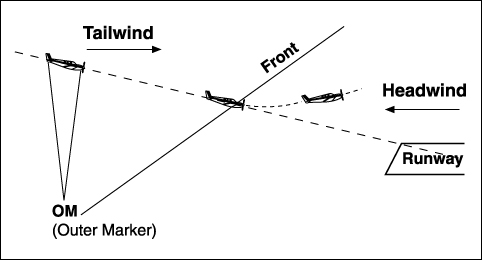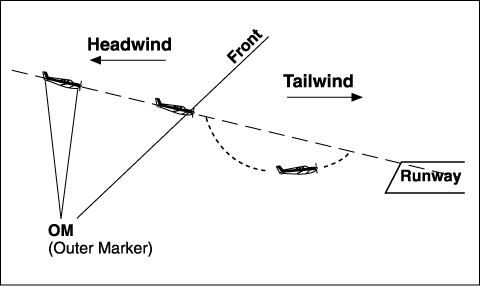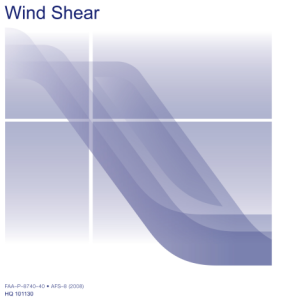Wind shear is defined as a change in wind direction and/or speed over a very short distance in the atmosphere. This can occur at any level of the atmosphere and can be detected by the pilot as a sudden change in airspeed. As a pilot you can be certain that you will experience wind shear throughout your flying career. It is a common encounter and most often associated with thunderstorms, microburst, and frontal activity. The majority of wind shear related accidents take place during the landing and takeoff phases of flight. In both phases of flight you are low and slow and will have less time to detect and recover from an encounter. Below are some of the more important aspects of wind shear in which you will be tested on during your FAA Private Pilot Knowledge Test.
- Low-level (low-altitude) wind shear can be expected during strong temperature inversions, on all sides of a thunderstorm and directly below the cell. A pilot can expect a wind shear zone in a temperature inversion whenever the wind speed at 2,000 feet to 4,000 feet above the surface is at least 25 knots.
- Low-level wind shear can also be found near frontal activity because winds can be significantly different in the two air masses which meet to form the front.
- In warm front conditions, the most critical period is before the front passes. Warm front shear may exist below 5,000 feet for about 6 hours before surface passage of the front. The wind shear associated with a warm front is usually more extreme than that found in cold fronts.
- The shear associated with cold fronts is usually found behind the front. If the front is moving at 30 knots or more, the shear zone will be 5,000 feet above the surface 3 hours after frontal passage.
Basically, there are two potentially hazardous shear situations—the loss of a tailwind or the loss of a headwind.
- A tailwind may shear to either a calm or headwind component. The airspeed initially increases, the aircraft pitches up, and altitude increases. Lower than normal power would be required initially, followed by a further decrease as the shear is encountered, and then an increase as the glide slope is regained. See Figure 1.

Figure 1: Tailwind shear to a Headwind.
- A headwind may shear to a calm or tailwind component. Initially, the airspeed decreases, the aircraft pitches down, and altitude decreases. See Figure 2.

Figure 2: Headwind shear to a Tailwind.
Some airports can report boundary winds as well as the wind at the tower. When a tower reports a boundary wind which is significantly different from the airport wind, there is a possibility of hazardous wind shear. Many modern commercial aircraft and jetliners have systems that have the ability to detect wind shear and notify the pilots. The types of aircraft however in which you will be flying during training are not equipped with these types of systems, the responsibility lies on you the pilot to detect and understand how to recover from all types of wind shear encounters.
The three questions below are great examples of what you should expect a wind shear question to look like on the knowledge test. Can you get all three correct; the answers are all outlined in the text above so hopefully you read carefully.
1. A pilot can expect a wind-shear zone in a temperature inversion whenever the windspeed at 2,000 to 4,000 feet above the surface is at least
A—10 knots.
B—15 knots.
C—25 knots.
2. Where does wind shear occur?
A—Only at higher altitudes.
B—Only at lower altitudes.
C—At all altitudes, in all directions.
3. When may hazardous wind shear be expected?
A—When stable air crosses a mountain barrier where it tends to flow in layers forming lenticular clouds.
B—In areas of low-level temperature inversion, frontal zones, and clear air turbulence.
C—Following frontal passage when stratocumulus clouds form indicating mechanical mixing.
Check out the FAA Safety document on Wind Shear for some great additional knowledge on the topic.
Answers to questions: 1. C 2. C 3. B





